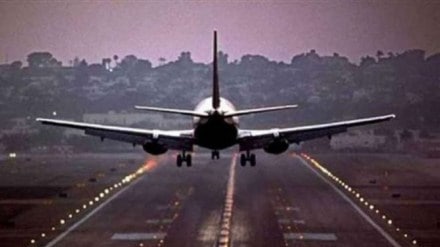The International Credit Rating Agency (ICRA) in a press release on Wednesday (March 6) said that the domestic air passenger traffic will exceed the pre-Covid levels of 141.2 million, reaching an estimated 150-155 million in the current fiscal. This projection indicates a growth of 8-13 percent.
Additionally, Icra foresees a notable decrease in the industry’s net loss for the upcoming two fiscal years. However, the agency acknowledges potential near-term challenges such as supply-chain issues and engine failures.
ICRA on domestic aviation industry
Furthermore, ICRA in the statement affirmed a “stable” outlook for the domestic aviation industry, citing the ongoing revival in both domestic and international air passenger traffic and a relatively stable cost environment.
The agency anticipates the momentum in traffic growth to persist into FY2025, with a similar estimated year-on-year expansion. This growth is expected to be supported by an increasing demand for both leisure and business travel, along with enhancements in airport infrastructure.
ICRA on international passenger traffic
The ratings agency anticipates that in the current fiscal year, the international passenger traffic for Indian carriers will surpass the FY2019 peak, reaching an estimated 25-27 million passengers. This reflects a year-on-year growth of 7-12 percent. Furthermore, the projections indicate a continued expansion, with an expected 7-12 percent increase to 27-29 million passengers in FY2025.
According to ICRA predictions, in FY2023, Indian carriers exceeded pre-Covid levels in international passenger traffic, although it fell short of the peak levels observed in FY2019, which stood at 25.9 million.
Lower net losses for Indian airlines
“The industry has witnessed improved pricing power, as reflected in increase in yields and thus the spread between revenue per available seat kilometre-cost per available seat kilometre (RASK-CASK) for the airlines.
“The same is expected to remain favourable, aided by a decline in aviation turbine fuel (ATF) prices and the relatively stable foreign exchange rates,” said Suprio Banerjee, Vice President and Sector Head for corporate ratings at Icra.
Banerjee added that this is the very reason why it is estimated that the industry is going to report a significantly lower net loss of Rs 300-4,000 crore (Rs 30-40 billion) in FY2024 and FY2025 compared to Rs 170-175 billion in FY2023.
The ratings agency also highlighted the significant impact of ATF prices and the Indian rupee-US dollar movement on the cost structure of airlines. In the April-February period of FY2024, the average ATF price experienced a year-on-year decline of 15 percent, standing at Rs 103,547/KL compared to Rs 120,978/KL in FY2023.
Despite this decrease, it remains 60 percent higher than the average of Rs 64,715/KL during FY2020. Given that fuel constitutes approximately 30-40 percent of airlines’ expenses, these factors play a pivotal role in shaping airline’s operational costs.
